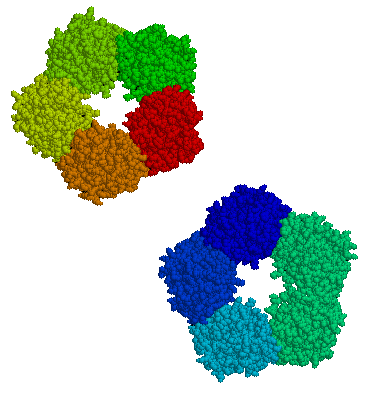ADHD Common in People with Mood Disorders

In a meta-analysis published in the journal Acta Psychiatrica Scandinavica in 2021, researcher Andrea Sandstrom and colleagues reported that people with mood disorders had a three times higher incidence of attention-deficit hyperactivity disorder (ADHD) than people without mood disorders. ADHD was also more likely to occur in people with bipolar disorder than in people with major depression. The comorbidity is most common in childhood, less so in adolescence, and lowest in adulthood.
Based on 92 studies including a total of 17,089 individuals, the prevalence of ADHD in people with bipolar disorder is 73% in childhood, 43% in adolescence, and 17% in adulthood. Data from 52 studies with 16,897 individuals indicated that prevalence of ADHD in major depressive disorder is 28% in childhood, 17% in adolescence, and 7% in adulthood.
Editor’s Note: A key implication of this research is that there is a huge overlap of bipolar disorder and ADHD in childhood, and that physicians need to specifically look for bipolar symptoms that are not common in ADHD to make a correct diagnosis. These include: brief or extended periods of mood elevation and decreased need for sleep in the youngest children; suicidal or homicidal thoughts and threats in slightly older children; hyper-sexual interests and actions; and hallucinations and delusions. When these are present, even when there are also clear-cut ADHD symptoms, a clinician must consider a diagnosis of bipolar disorder and treat the child with mood stabilizers prior to using stimulants or other traditional ADHD medications.
Conversely, physicians should be aware of the much lower incidence of ADHD in adolescents and adults with bipolar disorder. Here one should first make sure that the apparent ADHD symptoms of hyperactivity, inattention, poor concentration, etc. do not result from inadequately treated mania and depression, and if they do, treat these symptoms to remission prior to using traditional ADHD medications.
Recent Cannabis Use Linked to Greater Symptoms of Anxiety and Mood Disorders and Less Response to Treatment
 In a 2018 systematic literature review published in the Journal of Clinical Psychiatry, researcher George Mamman and colleagues reported that across 12 studies of people with anxiety and mood disorders, participants who had used cannabis in the previous six months had more symptoms than those who had used less cannabis or no cannabis during that period.
In a 2018 systematic literature review published in the Journal of Clinical Psychiatry, researcher George Mamman and colleagues reported that across 12 studies of people with anxiety and mood disorders, participants who had used cannabis in the previous six months had more symptoms than those who had used less cannabis or no cannabis during that period.
The 12 studies reviewed included a total of 11,959 participants. Four studies looked at post-traumatic stress disorder (PTSD), one at panic disorder, five at bipolar disorder, and 2 at depressive disorder. In addition to finding that recent cannabis use was associated with greater symptoms, the authors of the review also found that in 10 of the 12 studies, recent cannabis use was associated with less symptom improvement in response to treatment for bipolar disorder, depression, and PTSD; including both medication and psychotherapy.
In bipolar disorder, cannabis use was associated with greater symptom severity. Cannabis use for more than one year was linked to more recurrences of mania and shortened time to a recurrence. Compared to participants with no prior use of cannabis, those with a cannabis use disorder had more depressive symptoms, including sleep troubles and loss of interest in activities one had previously enjoyed.
In PTSD, any cannabis use at the beginning of the analysis period and sustained use of cannabis over time were both linked to greater symptom severity in the four months following the beginning of the analysis.
Mammen and colleagues cautioned that these results are limited based on the differences in measurements across the 12 studies, the inpatient populations under study, and the uncontrolled nature of the cannabis the participants accessed on their own time. However, the authors suggest that the findings may inform patients’ and doctors’ conversations about whether or not to use cannabis.
Clinical Vignettes from Dr. Elizabeth Stuller
 Dr. Elizabeth Stuller, a staff psychiatrist at the Amen clinics in Washington, DC and CEO of private practice Stuller Resettings in Baltimore, MD, provided this editor (Robert M. Post) with several interesting anecdotal observations based on her wide clinical experience with difficult-to-treat mood disordered patients.
Dr. Elizabeth Stuller, a staff psychiatrist at the Amen clinics in Washington, DC and CEO of private practice Stuller Resettings in Baltimore, MD, provided this editor (Robert M. Post) with several interesting anecdotal observations based on her wide clinical experience with difficult-to-treat mood disordered patients.
- Stuller has used low-dose asenapine (Saphris), e.g. half a pill placed under the tongue, for depressed patients with alcohol use problems who have trouble getting to sleep. She has also used asenapine for rapid calming of agitated patients in her office.
- Stuller has also had success with the use of the atypical antipsychotic drug brexpiprazole (Rexulti) for patients with bipolar depression and low energy. She typically uses 0.5 mg/day for women and 1 mg/day for men. Stuller finds that there is little weight gain or akathisia with brexpiprazole.
- She has had success with the drug Nuedexta, which is a combination of dextromethorphan and quinidine and is approved for the treatment of sudden uncontrollable bouts of laughing or crying, known as pseudobulbar affect, which can occur as a result of neurological conditions or brain injuries. It is a combination of an NMDA antagonist and a sigma receptor agonist. Stuller starts with the 20mg dextromethorphan/10 mg quinidine dose once a day and increases to twice a day in week two. She finds it useful for behavioral effects of traumatic brain injury (TBI), anxiety resulting from the use of synthetic marijuana (sometimes called spice), and psychosis not otherwise specified. Stuller also finds that some patients appear to respond well to Nuedextra but not minocycline, or vice versa.
Editor’s Note: Note that these are preliminary clinical anecdotes conveyed in a personal communication, and have not been studied in clinical trials, thus should not be relied upon in the making of medical decisions. All decisions about treatment are the responsibility of a treating physician.
Some Drugs for Hypertension Come with Greater Risk of Mood Disorders
 Depression and bipolar disorder have been linked to atherosclerosis, the accumulation of fats, cholesterol, and plaques on the walls of the arteries. There is some evidence that drugs to treat hypertension may contribute to mood disorders. A large study published in the journal Hypertension in 2016 suggests that certain classes of anti-hypertensive drugs, calcium antagonists and beta blockers, may increase risk of mood disorders compared to other treatments for hypertension.
Depression and bipolar disorder have been linked to atherosclerosis, the accumulation of fats, cholesterol, and plaques on the walls of the arteries. There is some evidence that drugs to treat hypertension may contribute to mood disorders. A large study published in the journal Hypertension in 2016 suggests that certain classes of anti-hypertensive drugs, calcium antagonists and beta blockers, may increase risk of mood disorders compared to other treatments for hypertension.
The study by researcher Angela H. Boal and colleagues used data from a hospital database to identify 144,066 patients between the ages of 40 and 80 who had taken anti-hypertensive drugs for more than 90 days. There was an independent linear connection between receiving a prescription for hypertenstion and being diagnosed with a mood disorder. Patients who took angiotensin-converting enzyme inhibitors or angiotensin receptor blocking drugs had the lowest rates of mood disorder admissions. Those taking calcium antagonists or beta blockers had an increased risk of a mood disorder, while those taking thiazide diuretics and those not taking anti-hypertensive drugs had no change in risk.
Inflammation Predicts Poor Response to Fluoxetine in Kids
Inflammation upsets the balance of neurotransmitters in the brain and can make antidepressants less effective. In new research by Maya Amitai and colleagues, children and adolescents were less likely to respond to the selective serotonin reuptake inhibitor (SSRI) antidepressant fluoxetine if they had high levels of inflammation measured in the blood.
Amitai’s study included 41 patients between the ages of 9 and 18. They met criteria for a diagnosis of either major depression or an anxiety disorder. The participants were treated with the SSRI fluoxetine for eight weeks. Those with high levels of the inflammatory markers tumor necrosis factor (TNF) alpha, interleukin-6, and interleukin 1 beta were less likely to respond to the antidepressant treatment. The research was published in the Journal of Child and Adolescent Psychopharmacology in 2016.
Editor’s Note: These findings parallel those from studies of adults, suggesting that inflammation can predict poor response to antidepressants in all age groups.
Benefits of a Healthy Lifestyle
 In a talk at the 2015 meeting of the International Society for Bipolar Disorder, researcher Michael Berk suggested that a healthy lifestyle may improve mood disorder symptoms.
In a talk at the 2015 meeting of the International Society for Bipolar Disorder, researcher Michael Berk suggested that a healthy lifestyle may improve mood disorder symptoms.
Diet is important. A study of more than 20,000 mothers revealed that those with unhealthy diets had children with more externalizing disorders, such as attention deficit hyperactivity disorder (ADHD), oppositional defiant disorder, and mania. Diets high in fat and sugar were linked to depression. The Nurses’ Health Study, a long-term epidemiological study of 50,000 women, showed that people who exercised more were less likely to be depressed, while lower muscle mass was associated with greater depression. Exercise also has anti-inflammatory effects.
Avoiding smoking has benefits, too. A study by Pasco and colleagues showed that people who smoke are at increased risk for a new onset of a mood disorder. Smoking is associated with onset of a more severe mood disorder earlier in life, suicide attempts, alcohol and substance abuse, and decreased response to treatment. Fortunately, quitting smoking can reverse some of these risks.
A Symposium on High Risk Studies: Offspring of Parents with Bipolar Disorder
In a symposium at the 2014 meeting of the International College of Neuropsychopharmacology, four researchers shared insights on children who are at higher risk for bipolar disorder because they have a parent with the disorder.
Researcher John Nurnberger has been studying 350 children of parents with bipolar disorder in the US and 141 control children of parents with no major psychiatric disorder, following the participants into adolescence. He found a major affective disorder in 23.4% of the children with parents who have bipolar disorder and 4.4% of the controls. Of the at-risk children, 8.5% had a bipolar diagnosis versus 0% of the controls.
Nurnberger found that disruptive behavior disorders preceded the onset of mood disorders, as did anxiety disorders. These diagnoses predicted the later onset of bipolar disorder in the at-risk children, but not in the controls. A mood disorder in early adolescence predicted a substance abuse disorder later in adolescence among those at risk.
In genome-wide association studies, the genes CACNA1C and ODZ4 are consistently associated with risk of bipolar disorder, but with a very small effect size. Therefore, Nurnberger used 33 different gene variants to generate a total risk score and found that this measure was modestly effective in identifying relative risk of developing bipolar disorder. He hopes that using this improved risk calculation along with family history and clinical variables will allow better prediction of the risk of bipolar onset in the near future.
Researcher Ann Duffy reported on her Canadian studies of children who have a parent with bipolar disorder and thus are at high risk for developing the disorder. In contrast to the studies of Nurnberger et al. and many others in American patients, she found almost no childhood onset of bipolar disorder before late adolescence or early adulthood. She found that anxiety disorders emerge first, followed by depression, and then only much later bipolar disorder. Bipolar disorder occurred with comorbid substance abuse disorders in only about 10-20% of cases in 1975, but substance abuse increased to 50% of bipolar cases in 2005. The incidence of comorbid substance disorder and the year at observation correlated strongly, indicating a trend toward increased substance abuse over the 30-year period.
Duffy found that having parents who were ill as opposed to recovered was associated with a more rapid onset of mood disorder in the offspring, usually in early adulthood. Duffy emphasized the need to intervene earlier in children of parents with bipolar disorder, but this is rarely done in clinical practice. Read more
Lithium Lowers Risk of Suicide
Suicide is a serious risk for people with mood disorders. We have noted before that various studies of lithium show that the drug lowers suicide risk in people with mood disorders. A 2013 meta-analysis by Andrea Cipriani et al. in the journal BMJ confirms this finding. The review of 48 randomized controlled trials comparing lithium with placebo or other active drugs in the long-term treatment of mood disorders showed that lithium reduces the risk of suicide and death from any cause.
Lithium was more effective than placebo at reducing number of suicides and deaths from any cause, and more effective than carbamazepine and anticonvulsants in general at reducing deliberate self-harm. The authors wrote that lithium seems to reduce risk of suicide and death by more than 60% compared to placebo.
Lithium may reduce suicide risk by preventing relapse of mood disorders, but it may also have other mechanisms of action, such as decreasing aggression or impulsivity.
One thing to note about these findings is that the reduction in suicide risk also applies to those with unipolar depression, not just those with bipolar disorder. There is a case to be made that lithium treatment could be targeted specifically to reduce suicide risk.
Adversity May Increase Risk of Mood Disorders
In adults with bipolar disorder, adversity in childhood has been associated with an earlier onset of bipolar disorder compared to those who did not experience some form of adversity such as verbal abuse, physical abuse, sexual abuse, loss of a parent, abandonment, or neglect. At the 2013 meeting of the Society of Biological Psychiatry, Nancy Low et al. reported that the number of these stressful life events a child experienced was associated with the number of their anxiety symptoms, psychiatric disorders, and lifetime substance abuse. Having experienced 3 or more adversities was associated with a 3.5-fold increased risk for developing a mood disorder and a 3-fold increase in anxiety disorders and alcohol or drug abuse.
While the study has not yet been published in a peer-reviewed journal, the abstract (#194) may be found in the meeting supplement, Volume 73, Number 9S of the journal Biological Psychiatry.
Editor’s Note: Low’s study is the first to report that childhood adversity is a risk factor for the onset of bipolar disorder in the general population.
Given the increasing evidence for the persistence of epigenetic marks on DNA and histones (which can’t change the sequence of genes but can change their structure) in those who have experienced such stressors in childhood, this could provide a mechanism for the long-term vulnerability of these children to the development of mood disorders and a variety of physical illnesses.
CRP in Blood Predicts Onset of New Episode in Childhood Mood Disorders
At the 2013 meeting of the International Society for Bipolar Disorders, researcher Barbara Gracious presented evidence that increased levels of high sensitivity c-reactive protein (hsCRP), a marker of inflammation, were associated with an increased risk for developing a full-blown mood episode in 71 youth (average age 13.8) participating in a study called Longitudinal Assessment of Manic Symptoms (LAMS-2). The children were selected for the study because they had manic symptoms that were not severe enough to meet criteria for a diagnosis of bipolar I or II disorder. This research has not yet been published in a peer-reviewed journal, but the abstract can be found in first 2013 supplement of the journal Bipolar Disorders (page 67).
CRP levels are also known to predict cardiovascular disease and Type II diabetes.
Levels of 25-OH vitamin D, TNF?, and IL-6 did not predict a later mood disorder.
Editor’s Note: These data suggest the importance of assessing CRP and other markers in youth who are either prodromal (having early symptoms of a mood disorder) or at high risk because of a family history of a mood disorder.
The next step for clinical research would be to determine what treatment might decrease CRP and whether it would also prevent the development of mood episodes.






